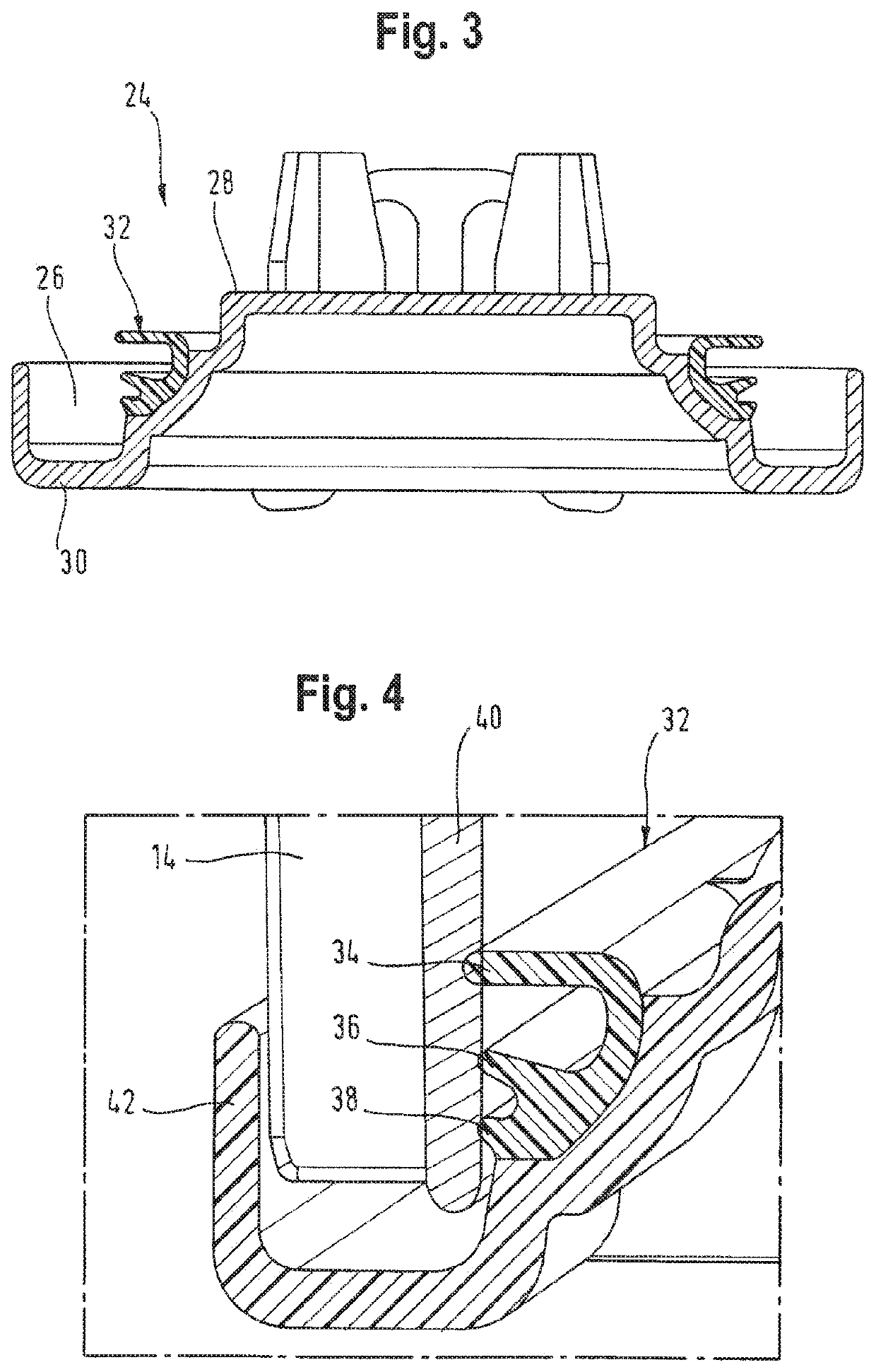[0010]In the filter housing sealing can hereby be effectively ensured precisely at that site at which the increased pressure and / or moisture occurs. Thereby that a radial, specifically a seal effectively acting laterally from inside against the edge of the filter housing is involved, only minimal forces are required for securing the cap. It has in particular been found that separate securement elements can be omitted. Furthermore, those disadvantages are avoided that result from the fact that the comparatively small cap is subject to deformation over the course of its service life, which applies especially to its outer side. In contrast, the filter housing is comparatively permanently rigid and does not become deformed in its essential circumference as is also the case regarding the inner side of the cap such that the sealing is developed between said two, comparatively durably dimensionally-stable components and can ensure long-lasting sealing.
[0011]Thereby that the seal is provided on the cap, for one, an advantage is obtained to the effect that, should it become damaged, it can be more readily replaced than if the seal were provided on the housing. The filter housing, furthermore, typically has a more complex form than the cap such that any tools and molds that are required for the integration of the seal into the cap, are markedly less complex than if the seal were provided on the filter housing.
[0013]It is preferred that the seal is at least partially implemented of a thermoplastic elastomer. Such a comparatively elastic and flexible material can be deformed without any problem such that the seal in the emplaced state of the cap is reliably and durably in contact on the inner face of the filter housing in the proximity of the opening edge.
[0015]Special reliability and security of the sealing is obtained if the seal comprises at least one sealing lip, preferably two or more and, especially preferred, three sealing lips. At least one sealing lip extends at least largely in the radial direction, i.e. at least largely parallel to the above described plane defined by the opening edge.
[0016]Special advantages are obtained if at least one sealing lip is more readily deformable than at least one additional sealing lip. Stated differently, by being shaped longer and / or thinner at least one sealing lip is softer than at least one other sealing lip. Even though the material of the individual sealing lips can be different, it is preferred for them to be implemented of the same material and for the seal overall to be unitary. The softer sealing lip involves preferably the innermost sealing lip which, for this purpose, can be developed longer and / or thinner than at least one other sealing lip. This sealing lip can hereby be especially easily deformable and, according to the preferred shaping, ensure the sealing against moisture far in the interior of the filter housing. The at least one more rigid sealing lip is shorter and / or more compactly implemented such that it becomes deformed less significantly in the axial, and primarily in the radial, direction. Stated differently, such a sealing lip is typically compressed in its direction of extension and can consequently ensure the reliable sealing.
[0017]The cap preferably comprises at its outer margin a substantially U-shaped channel in which an opening edge can be received. The opening edge can hereby be clasped especially reliably and securely and the cap can support itself outside on the housing in particular by its outer shank. This can especially advantageously take place in cooperation with the subsequently described projections, ribs or other discrete effective areas. Through the U-shaped channel, i.e. a groove, the continuous securement of the seal can be ensured, simultaneously discrepancies in the geometry of the opening and / or of the cap can be compensated and the sealing function can be ensured.
 Login to View More
Login to View More 

